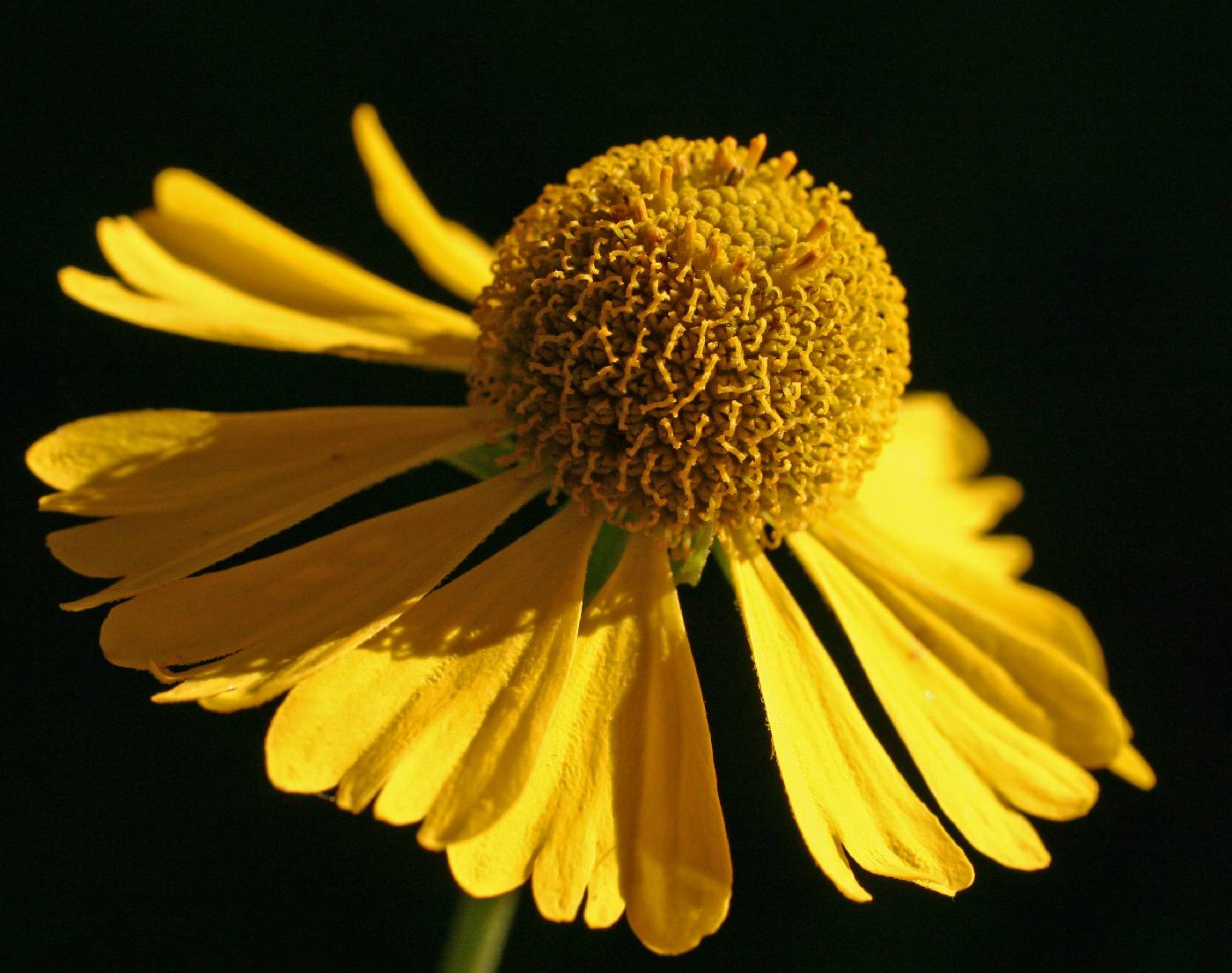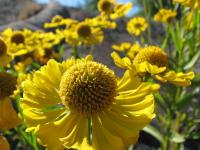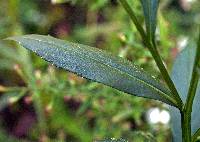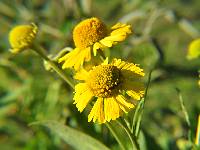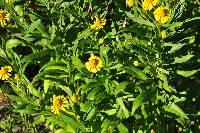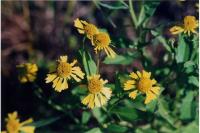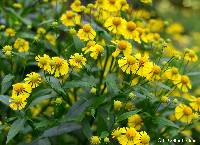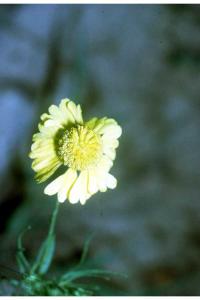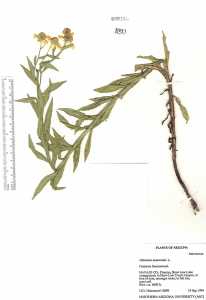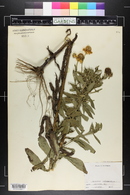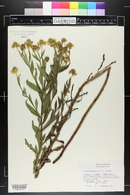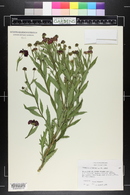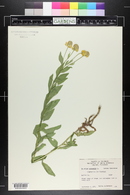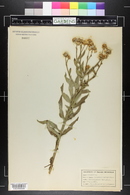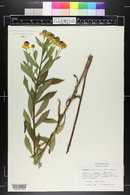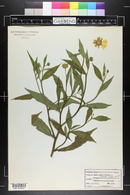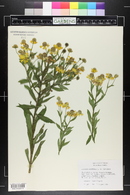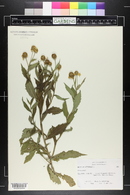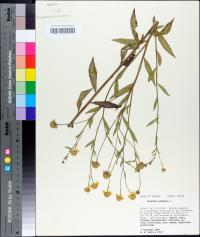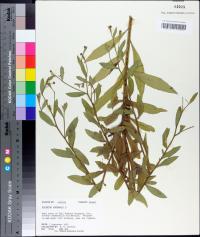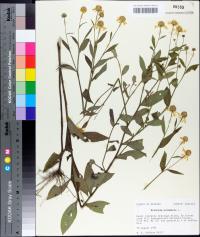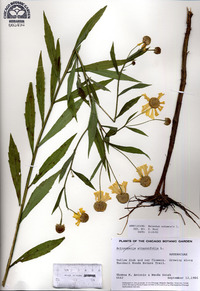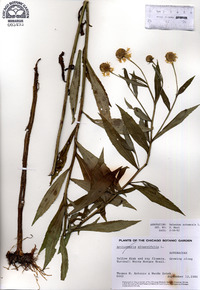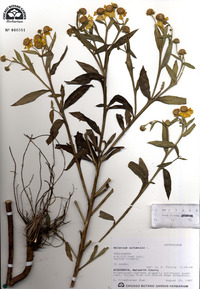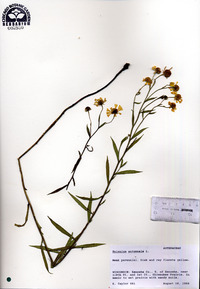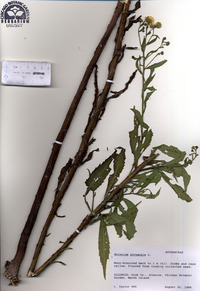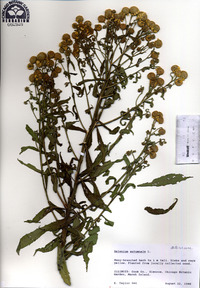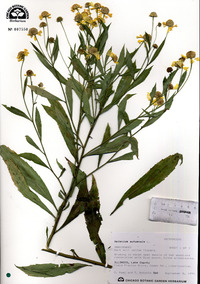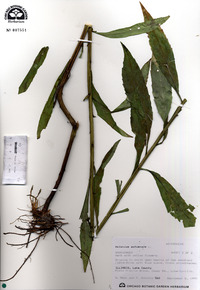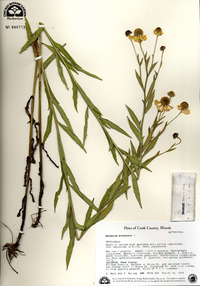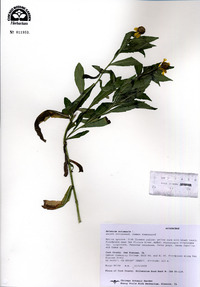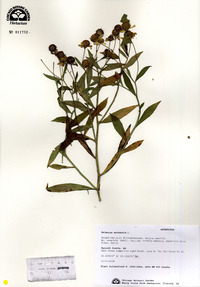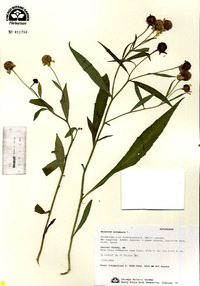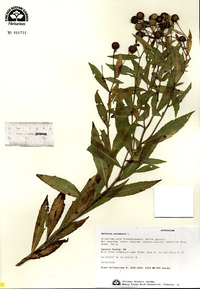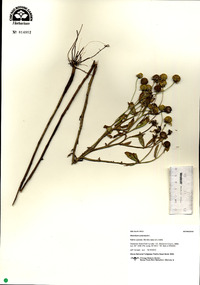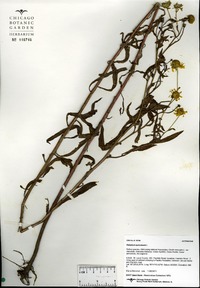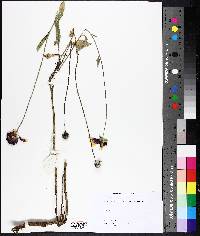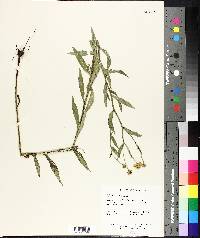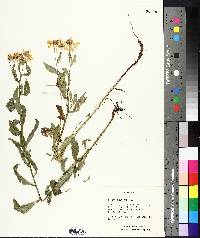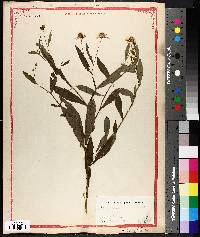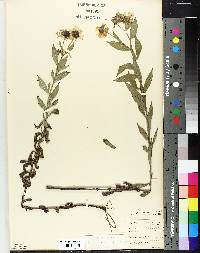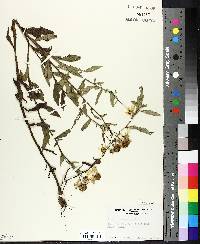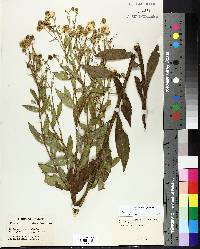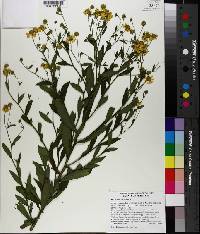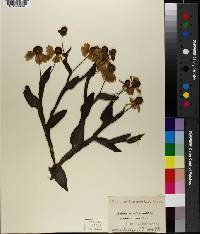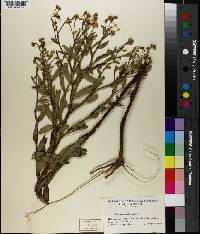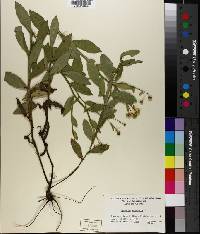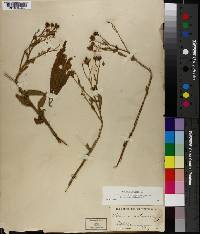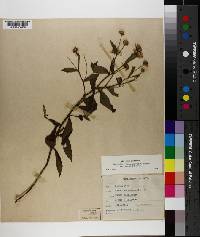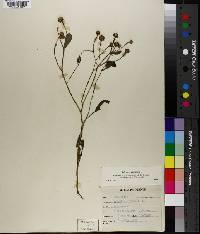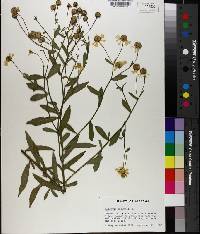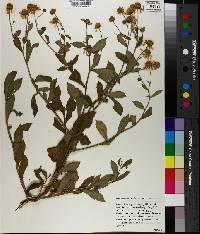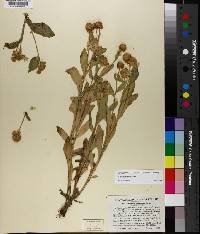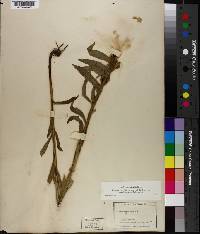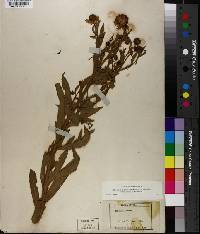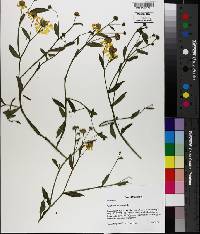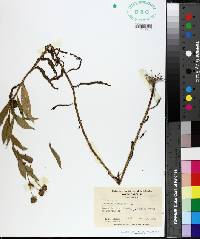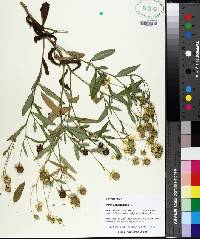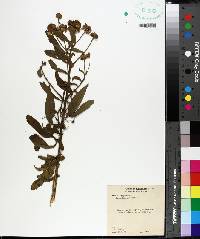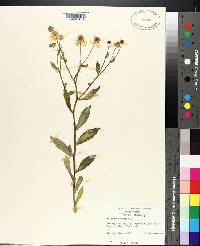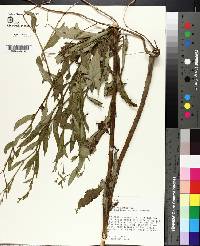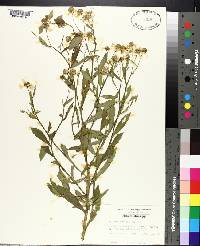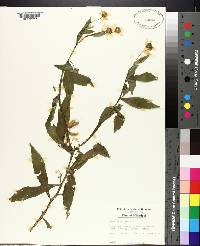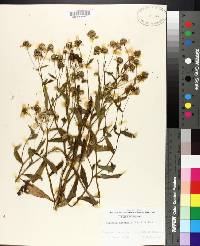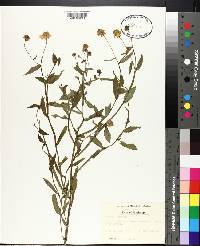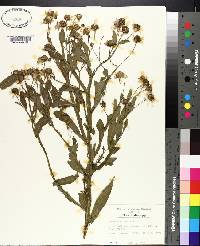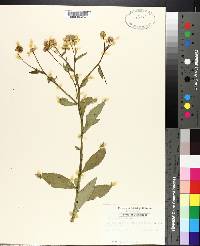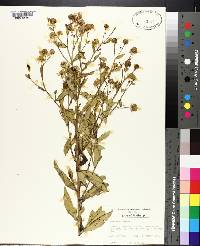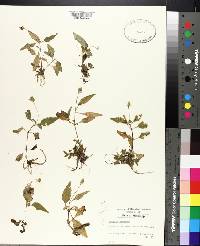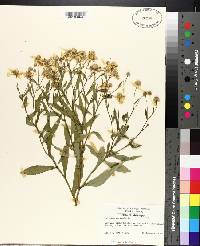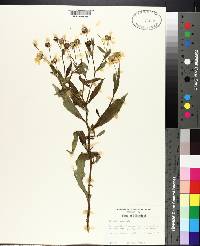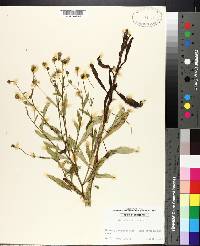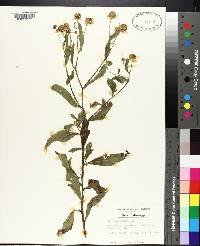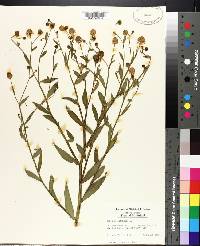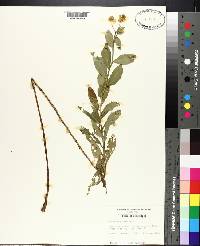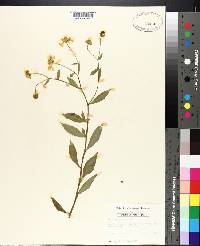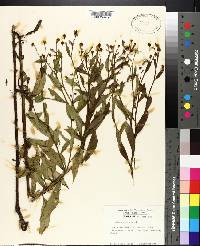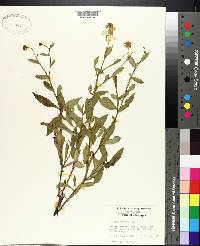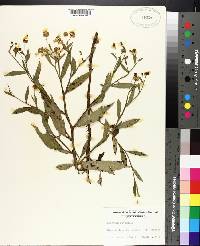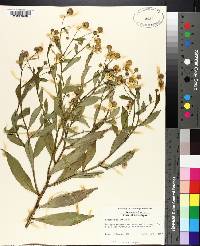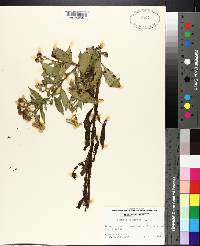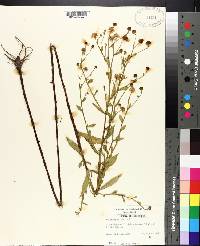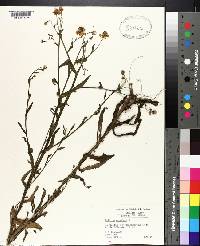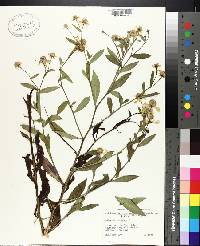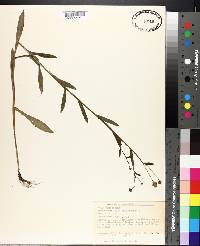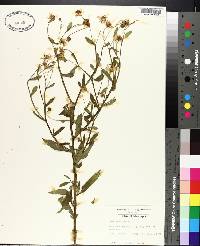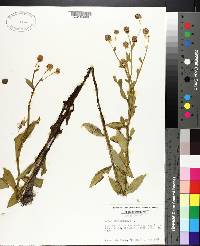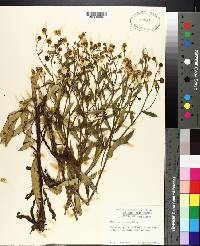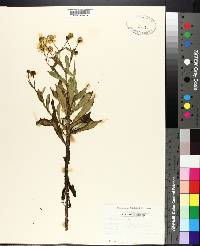
|
|
|
|
Family: Asteraceae
Autumn Sneezeweed, more...bitterweed, common sneezeweed, fall sneezeweed, false sunflower
[Helenium autumnale var. fylesii Boivin] |
Perennials, 50-130 cm. Stems 1(-7), branched distally, strongly winged, sparsely to densely hairy proximally, moderately to densely hairy distally. Leaves usually moderately to densely hairy, sometimes glabrous; basal blades (withered by flowering) lanceolate, oblanceolate, or obovate, entire or weakly lobed; proximal and mid blades obovate to oblanceolate, usually dentate or entire; distal blades oblanceolate to lanceolate, entire or dentate. Heads 5-70(-100+) per plant, in paniculiform arrays. Peduncles 3-10 cm, moderately to densely hairy. Involucres globoid, 8-20 × 8-23 mm. Phyllaries (connate proximally) moderately to densely hairy. Ray florets 8-21, pistillate, fertile; corollas yellow, 10-23 × 4-10 mm. Disc florets 200-400(-800+); corollas yellow proximally, yellow to yellow-brown distally, 2.4-4 mm, lobes 5. Cypselae 1-2 mm, sparsely to moderately hairy; pappi of 5-7 entire, aristate scales (0.5-)0.9-1.5(-1.8) mm. 2n = 32, 34, 36. Flowering (Jul-)Aug-Oct(-Nov). Roadsides, fields, along streams, ditches, seepage areas, around ponds and lakes; 20-2600 m; Alta., B.C., Man., N.W.T., Ont., Que., Sask.; Ala., Ariz., Ark., Calif., Colo., Del., D.C., Fla., Ga., Idaho, Ill., Ind., Iowa, Kans., Ky., La., Md., Mass., Mich., Miss., Mo., Mont., Nebr., Nev., N.J., N.Mex., N.Y., N.C., N.Dak., Ohio, Okla., Oreg., Pa., S.C., Tenn., Tex., Utah, Va., Wash., W.Va., Wyo. Fibrous-rooted perennial 5-15 dm, glabrous to finely strigose or puberulent; lvs numerous, all or mainly cauline, lance-linear to elliptic or narrowly ovate, narrowed to a sessile or subpetiolar base, decurrent as wings on the stem, not much reduced upwards, 4-15 cm נ5-40 mm, the lower ones deciduous; heads (1-)several or many in a leafy infl, hemispheric or subglobose, the disk yellow, 8-20 mm wide; rays ca 13 to ca 21, pistillate, mostly 1.5-2.5 cm; pappus- scales generally brownish, ovate or lanceolate, tapering to a short awn, to ca 1 mm overall; 2n=32, 34, 36. Moist low ground; Que. to Fla., w. to B.C. and Ariz. Aug.-Oct. The var. autumnale, with elliptic to oblong or lanceolate, generally toothed lvs 3-6 times as long as wide, occurs from Conn. to Minn., s. to Fla. and Tex. (H. altissimum; H. latifolium; H. parviflorum) The var. canaliculatum (Lam.) Torr. & A. Gray, a usually smaller, sometimes single-headed plant with narrower, mostly subentire lvs 7-12 times as long as wide, occurs from Que. to N.Y., w. to Wis. Other vars. occur westward. Gleason, Henry A. & Cronquist, Arthur J. 1991. Manual of vascular plants of northeastern United States and adjacent Canada. lxxv + 910 pp. ©The New York Botanical Garden. All rights reserved. Used by permission. From Flora of Indiana (1940) by Charles C. Deam I have included all of the forms of this complex species under this name. The plants show a wide variation in the shape and size of the leaves and in the number of heads on each plant, their size, and the length of the rays. The heads of some plants are about 8 mm wide and others are about 16 mm; the rays of some plants are about 6 mm long while others will have rays about 20 mm long. The pappus of the achenes is extremely variable, as is also the color of the hairs on the bodies of the achenes, these varying from white to reddish brown,. This species is frequent throughout the state but is never found in very large colonies and never becomes dominant as do the other two species. It is said to be poisonous to stock. It grows in moist soil, usually in the open, along ditches and streams and about lakes and ponds. ...... Indiana Coefficient of Conservatism: C = 3 Wetland Indicator Status: FACW |
This project was made possible in part by the Institute of Museum and Library Services [MG-70-19-0057-19].
Powered by Symbiota

